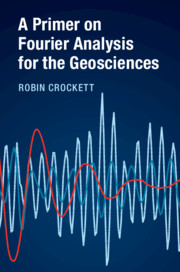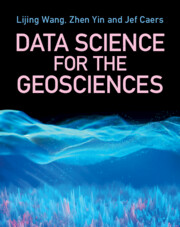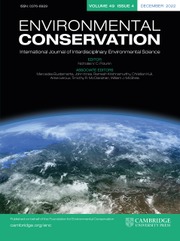A Primer on Fourier Analysis for the Geosciences
$46.99 ( ) USD
- Author: Robin Crockett, University of Northampton
- Date Published: February 2019
- availability: This ISBN is for an eBook version which is distributed on our behalf by a third party.
- format: Adobe eBook Reader
- isbn: 9781108676137
Find out more about Cambridge eBooks
$
46.99 USD
( )
Adobe eBook Reader
Other available formats:
Paperback, Hardback
Looking for an examination copy?
If you are interested in the title for your course we can consider offering an examination copy. To register your interest please contact [email protected] providing details of the course you are teaching.
-
Time-series analysis is used to identify and quantify periodic features in datasets and has many applications across the geosciences, from analysing weather data, to solid-Earth geophysical modelling. This intuitive introduction provides a practical 'how-to' guide to basic Fourier theory, with a particular focus on Earth system applications. The book starts with a discussion of statistical correlation, before introducing Fourier series and building to the fast Fourier transform (FFT) and related periodogram techniques. The theory is illustrated with numerous worked examples using R datasets, from Milankovitch orbital-forcing cycles to tidal harmonics and exoplanet orbital periods. These examples highlight the key concepts and encourage readers to investigate more advanced time-series techniques. The book concludes with a consideration of statistical effect size and significance. This useful book is ideal for graduate students and researchers in the Earth system sciences who are looking for an accessible introduction to time-series analysis.
Read more- Explains basic Fourier theory in intuitive mathematical terms, making it accessible to those without a strong background in mathematics and statistics
- Outlines methods such as the Lomb–Scargle periodogram technique that can be used for unequal-interval time-series data
- Includes straightforward no-frills R spectrogram code in an appendix to the book (also available online), along with a brief help-file, allowing readers to use the code with their own datasets as well as with the examples provided in the book
Reviews & endorsements
'This textbook is an excellent resource for students and researchers interested in time series and spectral analyses for a variety of geoscience problems, from seismology to climate change. It provides the theory behind these topics, with examples, in a methodical and easy to understand way, combined with ready-to-use computer programs.' Shimon Wdowinski, Florida International University
See more reviews'This is a perfect book for researchers wanting to know how to perform time series analysis using the Fast Fourier Transform. The examples from Earth sciences and the R codes are especially useful for young scientists and newcomers in the field of time series analysis.' François G. Schmitt, Centre National de la Recherche Scientifique (CNRS), Paris
Customer reviews
Not yet reviewed
Be the first to review
Review was not posted due to profanity
×Product details
- Date Published: February 2019
- format: Adobe eBook Reader
- isbn: 9781108676137
- contains: 72 b/w illus.
- availability: This ISBN is for an eBook version which is distributed on our behalf by a third party.
Table of Contents
Preface
Acknowledgments
1. What is Fourier analysis
2. Covariance-based approaches
3. Fourier series
4. Fourier transforms
5. Using the FFT to identify periodic features in time-series
6. constraints on the FFT
7. Stationarity and spectrograms
8. Noise in time-series
9. Periodograms and significance
Appendix A. DFT matrices and symmetries
Appendix B. Simple spectrogram code
Further reading and online resources
References
Index.-
General Resources
Find resources associated with this title
Type Name Unlocked * Format Size Showing of
This title is supported by one or more locked resources. Access to locked resources is granted exclusively by Cambridge University Press to instructors whose faculty status has been verified. To gain access to locked resources, instructors should sign in to or register for a Cambridge user account.
Please use locked resources responsibly and exercise your professional discretion when choosing how you share these materials with your students. Other instructors may wish to use locked resources for assessment purposes and their usefulness is undermined when the source files (for example, solution manuals or test banks) are shared online or via social networks.
Supplementary resources are subject to copyright. Instructors are permitted to view, print or download these resources for use in their teaching, but may not change them or use them for commercial gain.
If you are having problems accessing these resources please contact [email protected].
Sorry, this resource is locked
Please register or sign in to request access. If you are having problems accessing these resources please email [email protected]
Register Sign in» Proceed
You are now leaving the Cambridge University Press website. Your eBook purchase and download will be completed by our partner www.ebooks.com. Please see the permission section of the www.ebooks.com catalogue page for details of the print & copy limits on our eBooks.
Continue ×Are you sure you want to delete your account?
This cannot be undone.
Thank you for your feedback which will help us improve our service.
If you requested a response, we will make sure to get back to you shortly.
×





